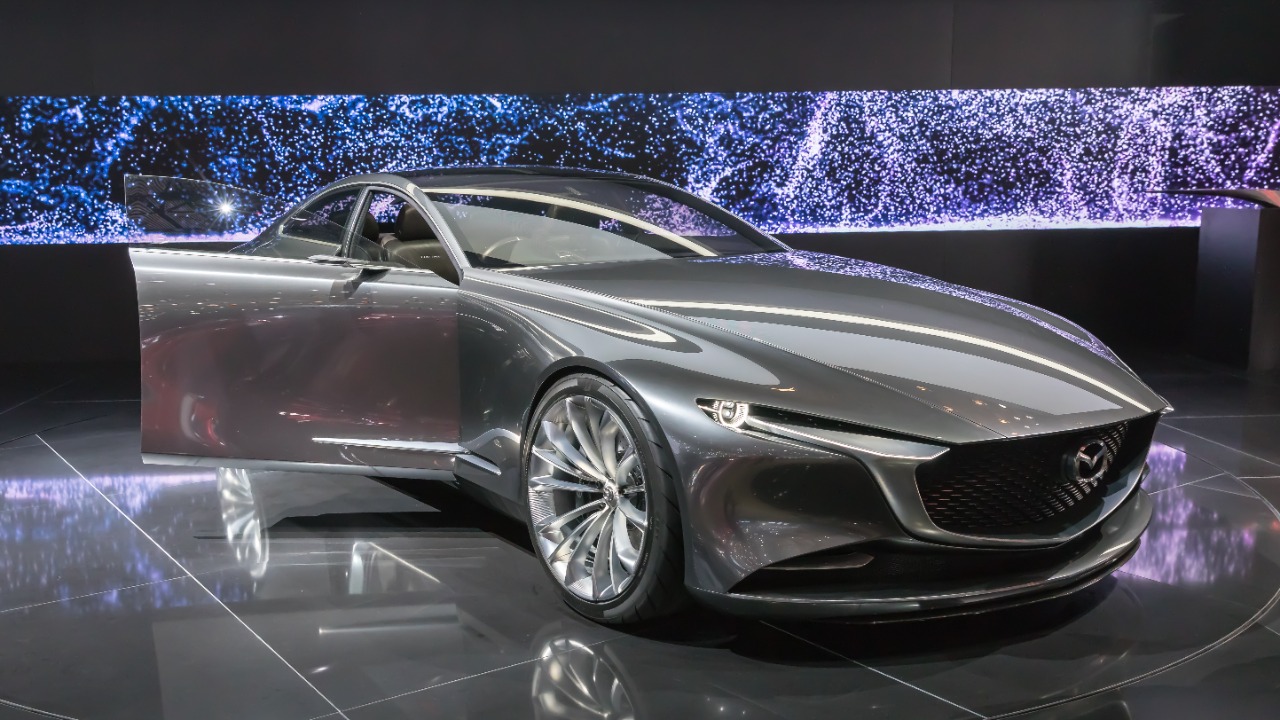
In a bold stride towards a greener future, Mazda is developing an innovative emissions recapture system. This groundbreaking technology aims to enable vehicles to intake and reuse their own exhaust gases, potentially reducing carbon output without the need for external infrastructure. This initiative is a testament to Mazda’s commitment to efficiency and sustainability, and it seeks to integrate this system into mainstream passenger cars to meet the increasingly stringent global emission standards.
Mazda’s Vision for Emission Recapture
Mazda’s strategic push towards self-contained emission management is a significant step in making vehicles environmentally self-reliant. The company’s vision is to create vehicles that can draw in their own exhaust for onboard processing, reducing the need for external emission control systems. This aligns with Mazda’s broader multi-solution strategy to reduce reliance on battery-electric vehicles, offering a more sustainable and efficient alternative.
The technology is being developed by a dedicated team of engineers at Mazda, who are currently testing prototypes to validate the system’s feasibility in real-world driving conditions. The team’s work is a testament to Mazda’s commitment to innovation and sustainability, as they strive to create a system that is not only effective but also practical for everyday use. Mazda’s development team is at the forefront of this pioneering effort, pushing the boundaries of automotive technology.
How the Recapture System Functions
The recapture system works by funneling exhaust gases back into the engine or a dedicated processing unit for filtration and reuse. This prevents the release of these gases into the atmosphere, significantly reducing the vehicle’s carbon footprint. Specialized sensors and pumps monitor and optimize the recirculation process, ensuring that performance and fuel efficiency are maintained.
The system is designed to integrate seamlessly with existing engine designs, with adaptations made for internal combustion engines to handle the recycled emissions without compromising power output. This means that the technology can be implemented in existing models, making it a practical and cost-effective solution for reducing emissions.
Environmental and Efficiency Gains
The potential environmental benefits of this system are significant. Initial simulations suggest that the recapture system could reduce CO2 emissions by 20-30% per vehicle mile compared to standard setups. This would represent a major step forward in the fight against climate change, reducing the carbon footprint of individual vehicles and the automotive industry as a whole.
In addition to reducing emissions, the system could also improve fuel economy by reusing unburnt hydrocarbons in the exhaust. This could extend the range of hybrid and gasoline models, making them more efficient and cost-effective. The system could also have broader ecological impacts, such as decreasing urban air pollution from tailpipe emissions in densely populated areas.
Technical Challenges in Implementation
While the potential benefits of the recapture system are clear, there are also significant technical challenges to overcome. One of the main hurdles is managing the heat buildup from recirculated gases. This requires advanced cooling systems to avoid engine stress and ensure the system operates efficiently and safely.
There are also durability concerns for components exposed to corrosive exhaust elements over long-term use. To address this, Mazda is conducting ongoing material testing to ensure the longevity of the system. Regulatory compliance is another challenge, with the system needing to meet varying international standards for emission testing and vehicle certification.
Comparison to Rival Technologies
Mazda’s onboard recapture system offers several advantages over rival technologies. Unlike selective catalytic reduction (SCR) systems used by competitors, Mazda’s system does not require urea additives, making it a more environmentally friendly option. The technology also serves as a bridge solution for markets slow to adopt full electrification, offering a practical and effective way to reduce emissions in the interim.
When compared to industry benchmarks such as Toyota’s hybrid efficiencies, Mazda’s approach holds its own. It offers a unique solution that combines the benefits of hybrid technology with the potential for even greater emission reductions, positioning Mazda at the forefront of green automotive innovation.
Path to Market and Timeline
Mazda is currently in the prototype testing phase, with initial road trials scheduled for late 2025. These trials will provide valuable data on the system’s performance across diverse driving scenarios, helping to refine the technology and prepare it for commercial use.
The company plans to roll out the technology in models like the CX-5 and Mazda3 by 2027. To ensure cost-effectiveness and keep vehicle prices competitive, Mazda is exploring partnerships with suppliers for scaling production.
Industry and Expert Perspectives
Automotive analysts have praised the innovation’s ingenuity, while cautioning on the challenges of scaling it for mass production. Environmental groups view it as a positive step, but urge complementary measures like fleet electrification to achieve maximum impact. There are also hints that other manufacturers may explore similar recirculation technologies in response to Mazda’s advancements, indicating the potential for this innovation to influence the wider industry.
More from MorningOverview